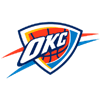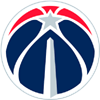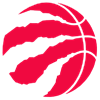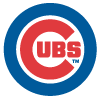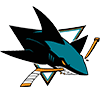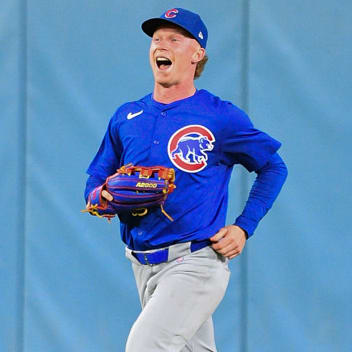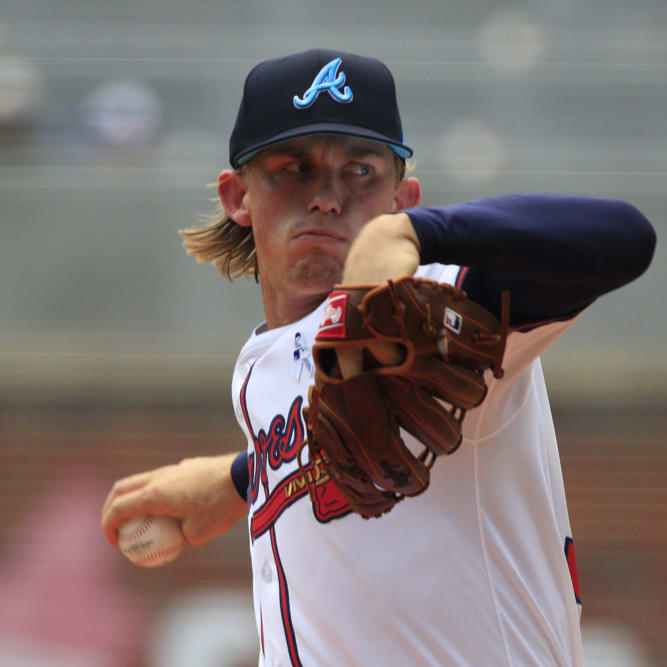If there's one thing I hate to do in keeper and dynasty leagues more than anything else, it's pay market prices in the auction or draft for saves. While there are certainly occasions when it's necessary – you have an otherwise competitive core, and nowhere else sensible to spend your money – it always feels like a failure in planning to have to pony up big bucks for a Kenley Jansen or Aroldis Chapman when I know there are going to be multiple opportunities during the season to address any shortfall, either in FAAB or via trade.
Better even than adding saves during the season, though, is having a couple of cheap closers among your keepers, and that's where the planning comes in. Starting in early July, if not sooner, I try to identify how many bench spots I can afford to free up and start stashing closers-in-waiting on teams that are likely to see some bullpen churn at the trade deadline. Picking up setup men before they've been officially handed ninth-inning duties is simply the most consistent profit source there is in fantasy baseball. Sure, a cheap hitter who turns into a stud offers a better theoretical ROI, but saving a consistent $10-$20 on a roster spot – or better, $20-$40 on two of them – gives you a huge advantage on competitors who find themselves engaging in bidding wars for closers at the auction table.
Even if you're gunning for a title this year and not rebuilding,
If there's one thing I hate to do in keeper and dynasty leagues more than anything else, it's pay market prices in the auction or draft for saves. While there are certainly occasions when it's necessary – you have an otherwise competitive core, and nowhere else sensible to spend your money – it always feels like a failure in planning to have to pony up big bucks for a Kenley Jansen or Aroldis Chapman when I know there are going to be multiple opportunities during the season to address any shortfall, either in FAAB or via trade.
Better even than adding saves during the season, though, is having a couple of cheap closers among your keepers, and that's where the planning comes in. Starting in early July, if not sooner, I try to identify how many bench spots I can afford to free up and start stashing closers-in-waiting on teams that are likely to see some bullpen churn at the trade deadline. Picking up setup men before they've been officially handed ninth-inning duties is simply the most consistent profit source there is in fantasy baseball. Sure, a cheap hitter who turns into a stud offers a better theoretical ROI, but saving a consistent $10-$20 on a roster spot – or better, $20-$40 on two of them – gives you a huge advantage on competitors who find themselves engaging in bidding wars for closers at the auction table.
Even if you're gunning for a title this year and not rebuilding, it can serve you well to find room for a couple of potential 2020 closers. First, if they get the job after this season's trade deadline, that's more saves to help you towards a championship. They could also create a surplus that can help you swing some late trades – even if you've made all the dump deals you can, a trade with another team in the hunt that, for instance, needs saves but has steals they can part with could offer a scenario that benefits you both as you jockey for position down the stretch. It always feels risky to make a deal with a team you're directly competing with, but fortune favors the bold, as they say.
Now, this list won't be comprehensive. Relievers like Michael Lorenzen, Scott Oberg and Liam Hendriks, who have already had shots to prove themselves in the closer role, are probably long gone in most leagues. Instead the focus will be on relievers who have yet to get their chance – the next potential Kirby Yates or Blake Treinen, in other words.
Top Targets
Joe Jimenez, Tigers – Shane Greene has one more year of arbitration before he hits free agency, so in theory he doesn't have to be moved, but the Tigers will almost certainly want to cash in on what has been a career year so far for the 30-year-old. Jimenez has been waiting his turn for a few years now, and while his erratic command and control will probably keep him from ever being an elite closer, and maybe not even a particularly reliable one, saves is saves. He's also got a career-high 13.5 K/9 and 16.6 percent swinging strike rate this year, so he does have the skills to handle the job. He's also the only real option Detroit has, especially since they apparently grabbed the wrong Austin Adams off the scrap heap.
Nathan Eovaldi, Red Sox – Now, I have a lot of reservations about Eovaldi in general. One, I've never liked him much as a starter, although most of my issues with his performance on that front go away if he gets shifted to the bullpen. Having only one reliable pitch is just fine in relief when it's a triple-digit fastball. Two, the idea that converting an injury-prone starter into a reliever to keep him healthier doesn't always work out. Three, I'm not convinced Boston won't also try to trade for an established closer at the deadline, especially if Eovaldi hasn't yet returned by then. All that said, he's going to be given a look, and opportunity is always the most important factor in closer value. If you're in a league where you have to wait for him to come off the IL to bid on him you probably won't have a chance to get him cheap, but if you can add him now while his return date is still uncertain (July 15 is the earliest possible date, but the Red Sox haven't indicated he'll be ready at that point, and he hasn't even begun a rehab assignment yet), do it.
Nick Anderson, Marlins – Sergei Romo hasn't had a great year, but the versatility he showed with the Rays in 2018 might be just as appealing to a contender looking to bolster its setup crew as his actual performance, and Miami probably won't ask for much for him. The bullpen behind him is, to be polite, a bit of a mess, but Anderson seems best positioned to step into the closer role in Romo's absence due to his big fastball and strong 57:14 K:BB through 35.1 innings. Also, the other likely options – Drew Steckenrider and Tayron Guerrero – are on the IL, which should make Don Mattingly's decision a lot easier.
Aaron Bummer, White Sox – The Pale Hose trading half their bullpen at the deadline is an annual tradition at this point, so the chances of Alex Colome being sent packing are approximately 800 percent. You could argue Kelvin Herrera would be the next man up, but he's just as likely to be flipped. Manager Rick Renteria has also been talking up Bummer, which seems like a prelude to him getting a look as the closer. The southpaw has a 95 mph fastball and an 89 mph cutter, and while his stellar first-half ratios have been a little bit lucky, he should be effective enough in ninth-inning duty. If the White Sox do make the leap into competitiveness in 2020, Bummer might not even get traded next July.
Hedge Your Bets
Reyes Moronta / Mark Melancon, Giants – Will Smith is G-O-N-E gone by the deadline, as the southpaw is a free agent after this season and will probably be the most coveted reliever on the trade market this month. The problem with targeting his successor, though, is that it's not entirely clear who that will be. Moronta is basically the Giants' version of Jimenez, a young fireballer with some control issues, but his slider is a strong put-away pitch and his changeup has flashed plus too, giving him the raw tools to someday be a top-shelf closer. Melancon doesn't have sexy stuff any more and isn't having a great year, but the 34-year-old's got that closer experience managers secretly love and one more year on his contract at $14 million. If the Giants decide to follow the White Sox strategy of churning through multiple closers as trade bait during their rebuild, they could well hand Melancon the job in the hopes he does well enough with it that they can flip him too before having to pay him all that money. Tony Watson could in theory also be a factor, but he's a better fit as a setup man. If you have two bench spots to use for closer stashes, grabbing both Melancon and Moronta in an effort to ensure you have one cheap 2020 closer isn't the worst idea.
Lottery Tickets
Young Royals relievers – Ian Kennedy has been shockingly good this year in his rare save chances, but with one more year and $16.5 million left on his contract, the Royals would probably love to deal him. The team also has the building blocks for its next dominant bullpen in place, although none of them are currently on the 25-man roster. Instead, the trio of Josh Staumont, Kyle Zimmer and Richard Lovelady are all at Triple-A Omaha waiting for their chance, which could come in August after pitchers like Kennedy and Wily Peralta are sent packing. Lovelady has the best numbers at Omaha (1.13 ERA, 18:4 K:BB through 16 innings and he leads the team in saves with four) but best profiles as a lefty setup option. Staumont, however, has 64 K's in 44.2 innings, and while they come with a ghastly 33 walks, he would only need to sharpen his control a little bit to become a potentially dominant closer. Kansas City hasn't given up on the idea of Zimmer in the rotation – he's started nine games for the Storm Chasers – but a full-time shift to relief still seems likely, and it's a role he could thrive in. That group may not end up being the next Greg Holland/Wade Davis/Kelvin Herrera, but it's not like the organization doesn't know how important having big arms at the back of the bullpen can be. If I had to pick one of the three to roster now it would probably be Staumont for his pure upside, but getting some shares in all three could pay dividends.
Hunter Harvey, Orioles – Speaking of injury-prone prospects who likely have the bullpen in their future, the O's seem to have given up on the idea of Harvey ever holding up well enough to handle a starting assignment. The final straw was an eight-run, four-inning outing against Double-A Portland in early June. Since then, the 24-year-old has shifted into a multi-inning relief role, and done well enough with it (0.00 ERA and 16:3 K:BB in 14 innings over his last five appearances) that the club moved him up to Triple-A. That doesn't necessarily suggest he'll be closing if Mychal Givens is out of the picture, but Baltimore really has no other likely suspects. Branden Kline might someday be the next Zack Britton if he can find the plate consistently, but otherwise there's nothing but scrubs and retreads in the team's bullpen mix right now. Miguel Castro and his 5.32 ERA? Shawn Armstrong and his 5.40 ERA? They're 'break glass in case of emergency' closers, not viable long-term guys. Harvey's the one who seems in the best position to become a pitcher the team can build a strong bullpen around.
Blue Jays relievers – While the Toronto rotation is likely to be gutted at the deadline, it's not yet clear if the same thing will happen to the bullpen – or who would get a chance to close if it does. Ken Giles is still arbitration eligible next year, so the team doesn't necessarily have to deal him now, and the next man up, Daniel Hudson, is probably more likely to be traded than Giles is. If both are flipped, though, there are a few names who could be in the ninth-inning mix. David Phelps was viewed as having closer-worthy stuff after his conversion to the bullpen a few years ago, but he missed all of 2018 to Tommy John surgery and since being activated from the IL, his velocity hasn't yet returned. If he starts popping 94 mph again he could be the favorite to assume closer duties, but until then it's hard to view him as a player to use a roster spot on. Joe Biagini is the default option for the Jays, but his arsenal, performance and track record inspire no confidence at all that he'd be successful. The other possibility is Jordan Romano, currently back at Triple-A Buffalo, who posted an 11:2 K:B in 5.1 innings during his first taste of the majors in June. Maybe they should trade for Cam Bedrosian to join the rest of their second-generation horde.







